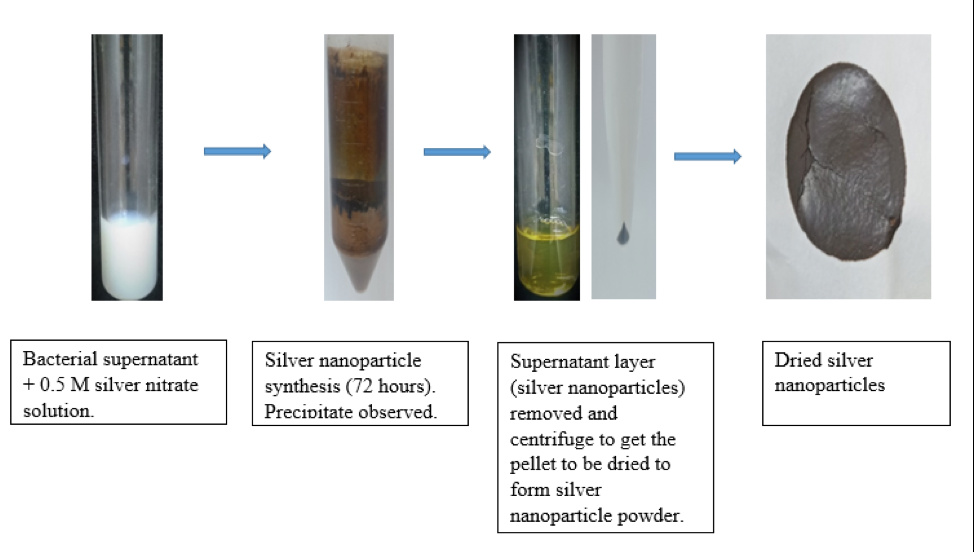Revista Mexicana de Ingeniería Química, Vol. 19, No. 3 (2020), Bio1059
The green synthesis and characterisation of silver nanoparticles from Serratia spp
|
C. De Silva, A. A. Mohd Noor, M. M. Abd Karim, B. Gunasekaran, S. Abd Gani, M. A. Cabrera, S. A. Ahmad
https://doi.org/10.24275/rmiq/Bio1059
Abstract
 |
|
The biological means of silver nanoparticles synthesis is an evolutionary step in the process of synthesizing nanoparticles to produce particles within the nano range. With the side effects of the use of chemical and physical synthesis methods yielding toxic and unstable, researches have turned to green synthesis to produce nanoparticles using the mechanism of the bacteria specifically the nitrate reductase enzyme present in most bacteria to break down silver nitrate to silver nanoparticles which are stable and reduces the cost of production. Marine bacteria plays it role by being a reservoir that can intake heavy metals and breaking down with no difficulty as a result of their harsh habitat which is rich in heavy metals. This study was done to prove that marine bacteria can synthesize silver nanoparticles and the nanoparticles are stable and has a range of size and shape through preliminary studies. Marine bacteria were isolated from marine soil samples and later identified to belong to the genus Serratia. Synthesis of the nanoparticles were done using extracellular synthesis where equal amounts of bacterial supernatant and 0.5 M silver nitrate was added and incubated under dark condition for 72 hours. 20 isolates showed positive results for synthesis which were further examined using UV-Visible Spectra analysis showing all 20 samples having a range of size and shape of nanoparticles with peaks observed between the ranges of 340 nm to 440 nm, with the sample strain AQ5-NT6 being the most potent. This study will provide fundamental data and add knowledge to the field of green synthesis of silver nanoparticles.
Keywords: Green synthesis, silver nanoparticles, Serratia sp.
|
|
 |

